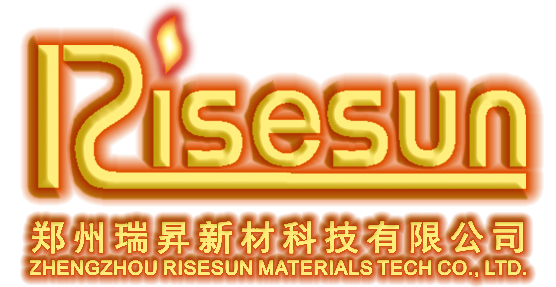16
2025
-
05
Understanding the Science Behind SiC Heating Elements: The Future of Heating Technology
Understanding the Science Behind SiC Heating Elements Table of Contents 1. Introduction to SiC Heating Elements 2. What Are SiC Heating Elements? 3. The Science Behind SiC Materials 4. Advantages of SiC Heating Elements 5. Applications of SiC Heating Elements 6. Comparison with Traditional Heating Elements 7. The Future of SiC Heating Technology 8. Frequently Asked Questions 9. Conclusion 1. Int
Understanding the Science Behind SiC Heating Elements
Table of Contents
- 1. Introduction to SiC Heating Elements
- 2. What Are SiC Heating Elements?
- 3. The Science Behind SiC Materials
- 4. Advantages of SiC Heating Elements
- 5. Applications of SiC Heating Elements
- 6. Comparison with Traditional Heating Elements
- 7. The Future of SiC Heating Technology
- 8. Frequently Asked Questions
- 9. Conclusion
1. Introduction to SiC Heating Elements
The evolution of heating technology has brought forth innovative solutions that enhance efficiency, durability, and performance. Among these advancements, **Silicon Carbide (SiC) heating elements** stand out as a remarkable innovation. Understanding the science behind these elements is crucial for industries seeking reliable and effective heating solutions. In this comprehensive article, we delve into the unique properties of SiC heating elements, their advantages, applications, and future trends.
2. What Are SiC Heating Elements?
**SiC heating elements** are advanced thermal devices made from silicon carbide, a compound known for its exceptional properties. These elements are designed to convert electrical energy into heat, making them ideal for various industrial applications. SiC heating elements are characterized by their high thermal conductivity, resistance to oxidation, and ability to operate at elevated temperatures.
2.1 Composition and Structure of SiC Heating Elements
SiC heating elements are typically composed of **silicon (Si)** and **carbon (C)**, which combine to form a crystalline structure that enhances their thermal stability. The microstructure of SiC allows for superior heat retention and distribution, resulting in efficient heating performance.
2.2 Types of SiC Heating Elements
There are several types of SiC heating elements, including:
- **Open-coil elements**: These are utilized in furnaces and kilns, offering excellent heat transfer.
- **Rod-shaped elements**: Commonly used in laboratory settings, they provide precise temperature control.
- **Plate elements**: Ideal for applications requiring uniform heating over a surface.
3. The Science Behind SiC Materials
The unique characteristics of SiC materials play a pivotal role in their performance as heating elements. Let’s explore the scientific principles that underpin the effectiveness of SiC.
3.1 Thermal Conductivity
**Thermal conductivity** refers to a material's ability to conduct heat. SiC demonstrates superior thermal conductivity, meaning it can transfer heat efficiently. This property is essential for applications requiring rapid temperature adjustments.
3.2 High-Temperature Resistance
SiC can withstand extreme temperatures, often exceeding 1600°C. This high-temperature resistance enables SiC heating elements to function in demanding environments without degradation.
3.3 Oxidation Resistance
One of the most significant advantages of SiC is its **oxidation resistance**. Unlike traditional heating elements, SiC does not easily oxidize, resulting in a longer lifespan and reduced maintenance costs.
4. Advantages of SiC Heating Elements
SiC heating elements offer a multitude of benefits that make them increasingly popular in various industries. Here are some of the standout advantages:
4.1 Energy Efficiency
SiC heating elements are known for their remarkable energy efficiency. Their ability to achieve high temperatures quickly means less energy consumption, which translates to lower operational costs.
4.2 Durability and Longevity
With their high resistance to oxidation and thermal shock, SiC heating elements boast a significantly longer lifespan compared to traditional heating elements. This durability reduces the need for frequent replacements, providing substantial cost savings over time.
4.3 Improved Performance
The excellent thermal conductivity of SiC ensures uniform heat distribution, leading to enhanced performance in processes requiring precise temperature control. This characteristic is particularly beneficial in applications such as annealing and sintering.
4.4 Versatility
SiC heating elements are versatile and can be designed to suit a variety of applications, from industrial furnaces to laboratory equipment. Their adaptability makes them a preferred choice for many sectors.
5. Applications of SiC Heating Elements
SiC heating elements are utilized across numerous industries due to their superior performance and unique properties. Here are some common applications:
5.1 Semiconductor Manufacturing
In the semiconductor industry, precise temperature control is critical. SiC heating elements are employed in processes such as diffusion and epitaxy to ensure optimal results.
5.2 Aerospace and Defense
The aerospace industry relies on SiC heating elements for testing and manufacturing components that must withstand extreme conditions. Their durability and high-temperature capabilities make them ideal for such demanding applications.
5.3 Automotive Industry
In automotive manufacturing, SiC heating elements are used in processes like sintering and heat treatment. Their efficiency contributes to reduced production times and improved product quality.
5.4 Laboratory Equipment
SiC heating elements are increasingly used in laboratory settings for experiments requiring precise thermal control. Their stability and performance make them ideal for research applications.
6. Comparison with Traditional Heating Elements
When comparing SiC heating elements to traditional options like **nichrome** or **carborundum**, several key differences emerge:
6.1 Efficiency
SiC heating elements generally outperform traditional heating elements in terms of efficiency. Their ability to reach higher temperatures quickly reduces energy consumption.
6.2 Longevity
While traditional heating elements may require frequent replacement, SiC heating elements offer greater durability, reducing long-term operational costs.
6.3 Performance in Harsh Environments
SiC heating elements excel in harsh operating conditions, where traditional materials may fail. Their high resistance to oxidation and thermal shock ensures reliable performance.
7. The Future of SiC Heating Technology
The demand for efficient and durable heating solutions continues to rise, driving advancements in SiC heating technology. Expect to see innovations that further enhance their performance and broaden their applications in various sectors.
7.1 Advancements in Material Science
Ongoing research into the properties of SiC may yield new formulations that boost performance, leading to even greater efficiency and durability in heating applications.
7.2 Integration with Smart Technologies
As industries increasingly adopt smart technologies, the integration of SiC heating elements with IoT devices could revolutionize temperature control, enabling real-time monitoring and adjustments.
7.3 Expanding Market Applications
The versatility of SiC heating elements will likely lead to their adoption in new markets, including renewable energy applications, where efficient heating plays a crucial role.
8. Frequently Asked Questions
8.1 What is the maximum temperature that SiC heating elements can withstand?
SiC heating elements can typically withstand temperatures exceeding 1600°C, making them suitable for high-temperature applications.
8.2 How do SiC heating elements compare to other materials?
SiC heating elements outperform traditional materials in terms of energy efficiency, durability, and performance under extreme conditions.
8.3 Are SiC heating elements suitable for laboratory use?
Yes, SiC heating elements are ideal for laboratory applications due to their precise temperature control and stability.
8.4 What industries benefit from SiC heating technology?
SiC heating technology is beneficial across various industries, including semiconductor manufacturing, aerospace, automotive, and laboratory research.
8.5 How do I maintain SiC heating elements?
SiC heating elements require minimal maintenance due to their durability. However, regular inspections can help identify any potential issues early.
9. Conclusion
Understanding the science behind **SiC heating elements** reveals why they are becoming the preferred choice for various industries. Their unique properties—high thermal conductivity, durability, energy efficiency, and versatility—position them as leaders in heating technology. As industries continue to demand more efficient and reliable heating solutions, SiC heating elements will undoubtedly play a crucial role in shaping the future of heating technology. Embracing this innovation will not only enhance performance but also contribute to significant cost savings and energy efficiency.



